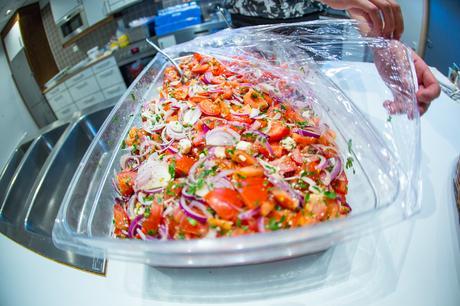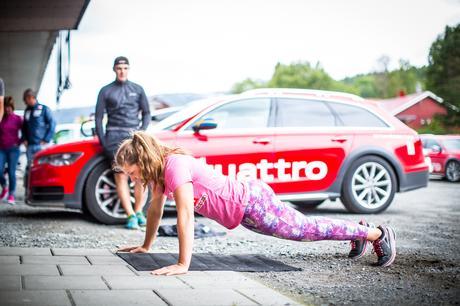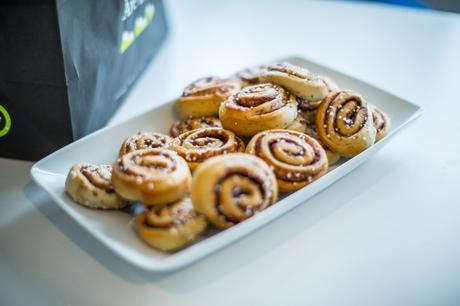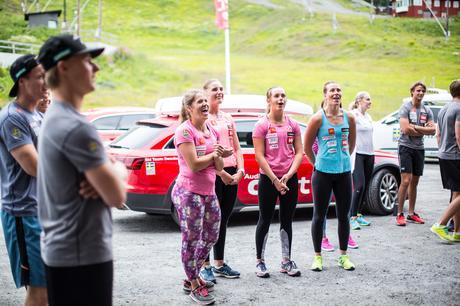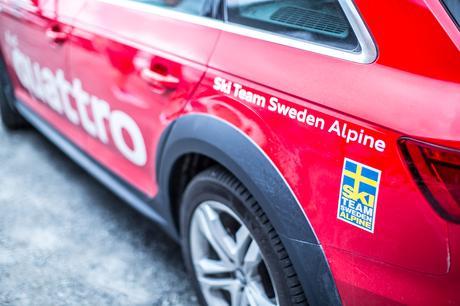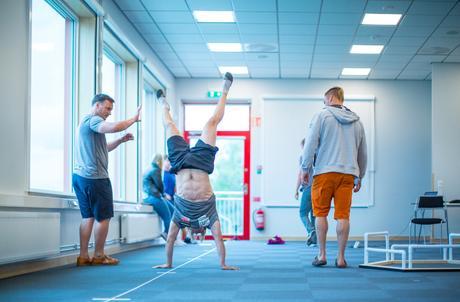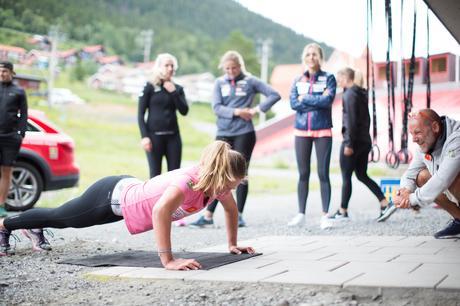
Just a few weeks back, I had the epic behind-the-scenes experience of training alongside some world-class, hardcore athletes; it was an honor to be invited to the pre-season launch session with my home country’s championship Ski Team. This event has only ever taken place behind closed doors in the past, so I bring you this post with enormous excitement! On the day, I was asked to talk a little about social media and share my findings on what has worked and not worked when writing this blog; it was also a chance for me to get to know this inspirational family of athletes and coaches, see how they work together as a team, to meet the coaches and to participate in a totally punishing kick-off workout! Click MORE to see what we got up to during the games!

THE BACKGROUND:
The ‘Alpine Games’, as they’re referred to, are something of a re-launch following the athletes’ summer breaks, and consist of three intense days of physical, mental and communicative, team-building challenges, as well as some classroom-based sessions which focussed on the importance of Anti-doping, teamwork exercises, business and social media awareness etc.
The athletes were grouped in small teams of similar age and ability, where they compete to win as a group but also to fight for the honor to become the ‘Mr. & Ms. Alpine Games’. This year, the mighty Maria Pietilä Holmner won Ms. for the second consecutive year. Alpine Games newcomer Jesper Brändholm was crowned Mr. Alpine Games in the individual competitions.
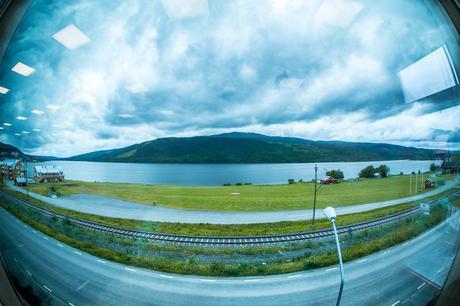
THE DESTINATION: Åre Ski Resort
The kick off took place in Åre, perhaps the most famous Swedish ski destination which every year attracts 500,000 visitors from all over the world. It’ll host the international World Cup in February 2019 where the best ski racers in the world will battle it out for ultimate glory in Slalom, Giant Slalom, Super G, Downhill, Team and Alpine combined. It’s also where Ski Team Sweden Alpine are headquartered in their newly built facility. The resort offers long sweeping vertical runs, plenty of off-piste, beautiful scenery and despite being some 200 miles south of the Arctic Circle, some spectacular views of the Northern Lights when it’s in-season!
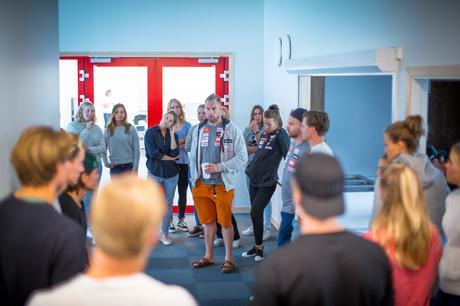
THE TRAINING!
One thing struck me above all else; there’s absolutely NO body uniformity in this sport… Unlike many other competitive sports, the ski athlete does not conform to one particular body type.
What do I mean? Take, for instance, a long distance or endurance runner who operates mostly in an aerobic arena which requires a good amount of stamina. This long-distance runner has more slow-twitch, ‘Type 1’ muscle fibers, which have a slower contraction speed but a higher aerobic capacity and resistance to fatigue. The body type would be described as ‘ectomorphic’ (https://en.wikipedia.org/wiki/Somatotype_and_constitutional_psychology) and this body type is way better equipped for this particular sport.
Conversely, a sprinter’s muscles have more fast-twitch fibers, and they’re also bigger and denser. The larger the muscle, the more force it can produce; this body type is typically defined as ‘mesomorphic’. Therefore, a mesomorphic long-distance runner would have to haul the extra weight around, whilst it’s using up energy which can mean early fatigue. So these sorts of athletes bodies are naturally suited to purpose.
Now, in the back in Ski arena up in Åre, upon observing the athletes, there were all types of bodies, across both of the genders; wiry, muscular, tall and short, some frames better suited to the speed disciplines, others more agile in the technical disciplines. What was even more fascinating to me was that in the individual challenges the results differed hugely. Whilst on the snow, an athlete may reign supreme in ski technique, they might lack shoulder strength on ‘ground training’ (for example), and vice versa, so being in perfect shape can still be trumped by supple flexibility and ‘feel’ to correct and adjust oneself on the snow and snatch the win. These ‘Alpine Games’ are partly designed to showcase every single athlete’s strengths and weaknesses to themselves, but also to each other, and the coaches know that a well-rounded performance across all disciplines will show the skier to be well positioned for the season ahead. It’s awesome to see!
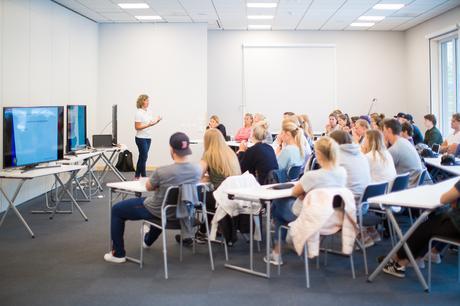
WHAT WERE THE CHALLENGES?
PULLUPS SUSPENDED FROM THE RINGS
WHY? Pull-ups are one of my all-time favorite exercises! A devastating upper-body compound movement which works a number of larger muscle groups at the same time (back, shoulders, & arms)!
HOW?
1. Here, the goal was to start in a hanging position with hands facing forward. However, you could start with hands facing inwards or facing towards you. As you slowly pull yourself up your hands will naturally rotate inwards to save your shoulder joints. At the end position, they will be facing inwards.
- As you slowly start pulling yourself upwards to the end position which is where your chest almost touches the rings. Your chin is then above the rings.
- Often, you’ll hear people say, ‘chest up’ or ‘open up your chest’. It’s easy to hunch your shoulders in this position, so focus instead on bringing your shoulders down and back, and lead with your chest as you pull yourself up.
- Also, avoid arching or swinging your legs back and forth or side to side. It’s better to perform this exercise slowly and in a controlled manner as opposed to ‘jumping up’ relying on momentum, with technique suffering as a result.
- Finally, slowly lower yourself to the initial starting position, and repeat to failure. Some team members such as Dan-Axel Grahn were easily powering out 50+ of these!
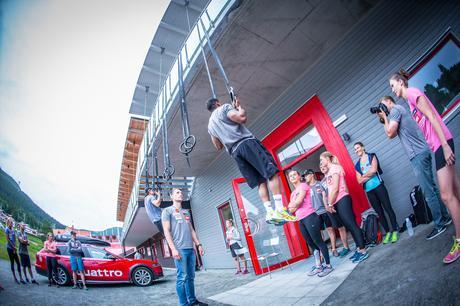
HANGING LEG RAISES
WHY? The hanging leg raise is great for a number of reasons and it’s ideal for building core strength, fast. If you’re new to these, aim to hang from a bar, curl your hips and knees up to your chest and as you get stronger progress to the full leg raises. It’s a wonderful and fun exercise to work the abdominals. It requires core strength, endurance, flexibility, and a solid, strong grip.
HOW?
- Depending on the height of the rings (you should be able to adjust them or alternatively place a chair below so you can comfortable get into position) avoid having to jump up and swing all over the place. Another option is of course to use a bar.
- Ensure to keep your shoulders pulled down, ‘away from your ears’. This helps improve your posture and helps protect your shoulders from potential injuries.
- When you lift your legs, the movement should occur at your hips—not in your lower back.
- Try to control the legs as you slowly bring them back down, this requires more core work as opposed to allowing gravity to do all the work for you.
- Try to create tension in your arms, your core and you whole body. Try not to just hang, but create tension. This way, you’re engaging all of your major muscles in your body, which will help stabilize your spine and will make it easier to raise your legs to your chest.
- Take a deep breath in and when your legs as high as they can go, exhale through. Try taking deep belly breaths to avoid your chest, ribs to rise. This causes the abs to contract and makes you brace the core. Keeping the abs contracted means you don’t just use momentum to get your legs up, but also pressures the abdominals, and causes you to tear more fibres, which in turn leads to greater rebuild.
- Inhale when you lower your legs.
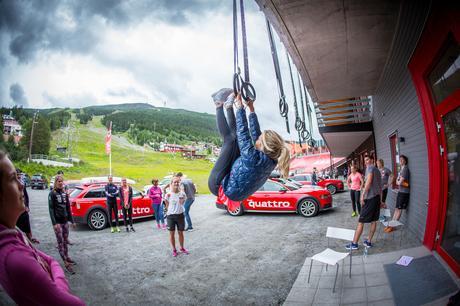
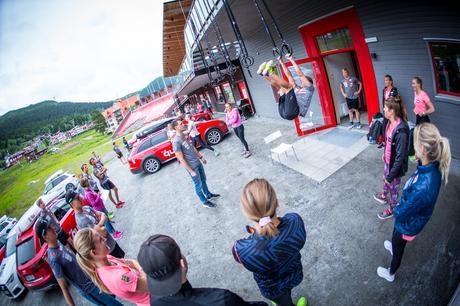
PUSH UPS WITH A PALM RAISE AT THE BOTTOM
WHY? These pretty much target every muscle in your entire body – they’re great for chest, arms, core and much more. The press-up can be varied depending on the positioning of the arms/hands and rendered easier/harder accordingly. For the endurance test, the requirement was that you had to start in a position where your chest was comfortably flat, resting on the ground, with hands off the floor.
HOW?
- Start by lying on the floor face down and place your hands about a shoulder-width apart whilst pressing your torso up at arm’s length, on tiptoes. Basically, get into a high plank position.
- Then slowly lower yourself down until your chest touches the floor. Ensure your hands come off the ground. Then start over.
- Press your upper body back up to the starting position.
- Repeat to annihilated exhaustion. Again, Max Gordon Sundquist powered out >50.
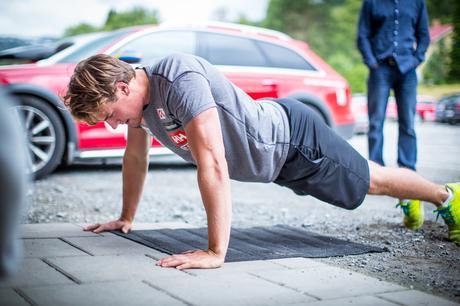

THE SINGLE LEG REACH-AND-TOUCH !!!
WHY?
Balancing on a single leg helps you to isolate and render stronger individual muscles, and to make your reaction time better. When the balance is impaired, muscles work less effectively and struggle to deliver proprioception information (which tells you about where you are in space) to your brain. The exercise strengthens the glutes, hamstrings, and core while enhancing the balance of the stable leg.
HOW:
- Standing on a measuring tape, slowly and in a controlled manner, start by bending the leg on which you are standing, whilst simultaneously moving the other leg behind you (similar to a single leg deadlift position)
- Reach down as far along the measuring tape as you can – all along ensuring your airborne foot and none of your other body parts touch the ground.
- Slowly, and in a controlled manner, return to standing, and repeat on the other side. Repeat this pair a further 4 times, just to get clear measurements!
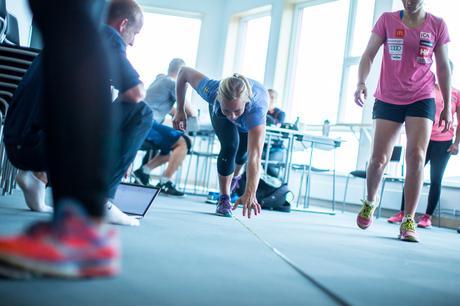
STATIC LAUNCHING JUMPS
WHY?:
This is test mainly used to measure an athlete’s explosive lower-body power and is a used by coaches to measure the power in the lower body.
HOW?: For this, you’ll need some way of measuring your results… The pros used a light-gate to evaluate the time between takeoff and landing, but you could use your phone, starting the timer when you launch and stopping it the moment you touch down.
- Start by bending the knees and using your arms to propel you upwards into the air.
- The aim is not just to jump as high as possible (with knees and legs totally straight) but also to attempt to land in the same spot as you took off – as jumping forwards, backward or sideways could affect the test results.
- You’re allowed three jumps so that performance averages can be calculated.
- Squat Jumps are a fantastic way to build explosive power to grow your capacity for this measurement!
See our below image of Gustav Lundback reaching some heady heights with his jumping efforts – he seemed to hang in the air for minutes!
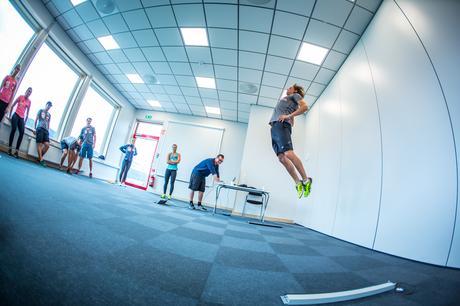
THE HANGING N-SIT !!!
Powering out an N-sit hold on the rings – one of many drills they put me through. This is a deceptively brutal exercise which requires serious all- round strength, including core strength, strong triceps, shoulder strength, as well as the smaller stabilizers. The benefits include defined triceps, chiseled abs, shoulder health as well as functional core strength.
How to?
1) If you don’t have rings try the dip bars.
2) Here, we started off squatting on the box below. That way you can carefully get into position, find the technique & the comfortably & securely get into position. It eliminates having to jump & quickly try to correct your technique.
3) Position yourself between the rings, set shoulder-width apart. Using a firm, neutral grip, push your body off the ground, locking your elbows as if you’re at the top of a dip exercise. Make sure to keep your shoulders down as you bend your knees, & hold up your thighs, hold your legs together, forming a N sit.
4) How long can you hold it for? I want to say that 2.5 minutes was the record on the day; but I erased this one from my memory!
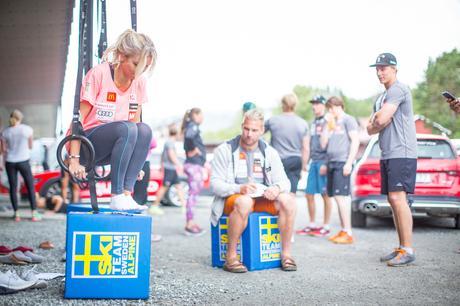
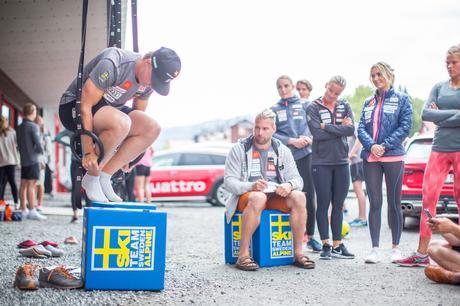
Other more specialist challenges were:
- Slalom Hexagon Jumps

- Walking Handstands

- Skipping Challenges
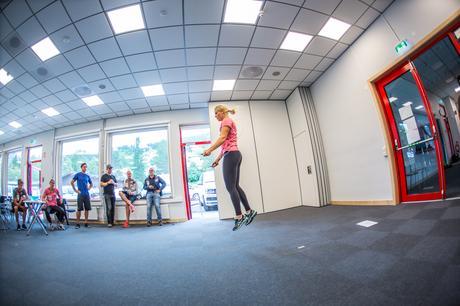
- Flexibility Evaluations

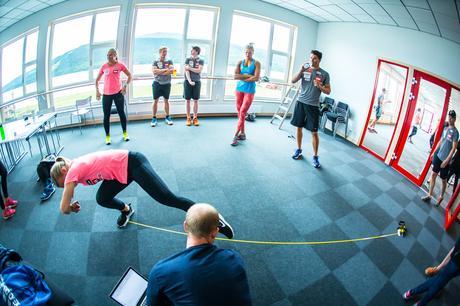
THE CONCLUSIONS
I interviewed a host of fascinating athletes and coaches during my time with the team and look forward to bringing you those posts in the near future, so that you can glean some insight into the focused and dedicated lives of these passionate, world-class competitors!
My time being around them, and seeing how they will each other on, how they share their energy as a collective force to help each team member pull out just a little more performance; that was unbelievably warming and hugely motivating. I return to London having taken something of that team’s drive back with me, and will attack my training with renewed vigour, and I greatly look forward to following their progress during the 2017-18 season! For the record, I will be proudly wearing my official Ski Team Sweden gilet, which the team kindly presented as a gift to me!
For anyone considering visiting Åre, check out SkiStar for lodging, accommodation, ski pass and other information, https://www.skistar.com/en/Are/

